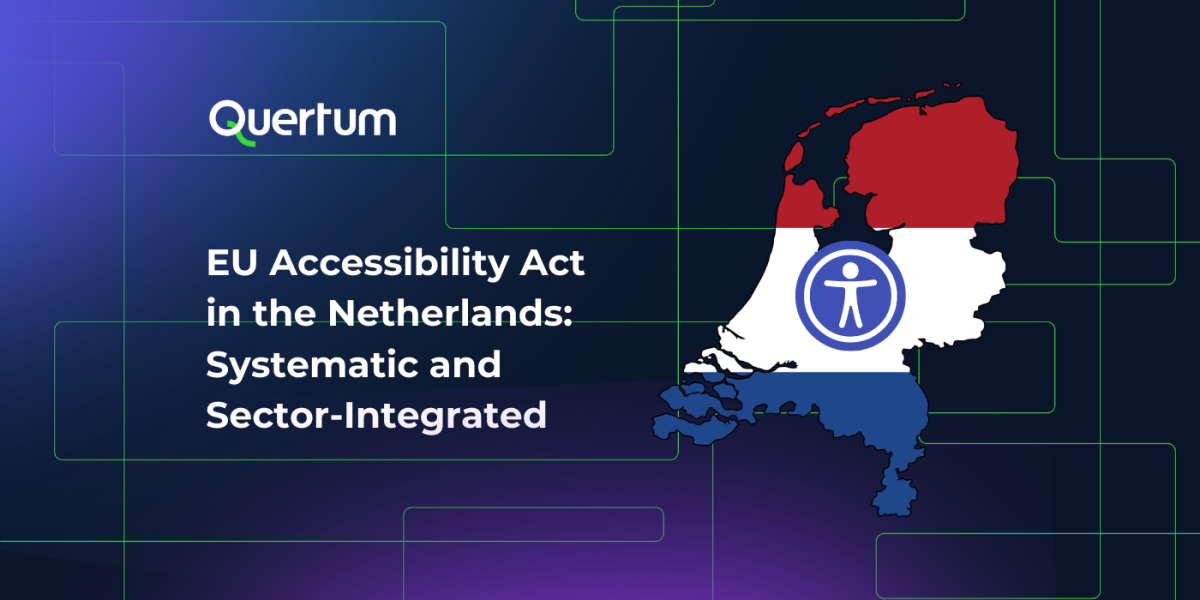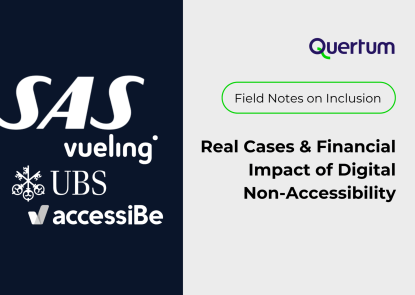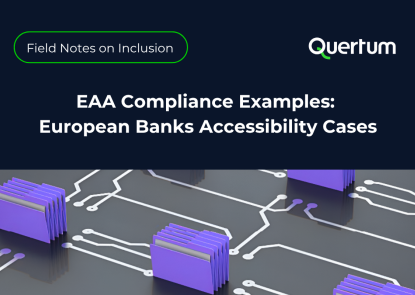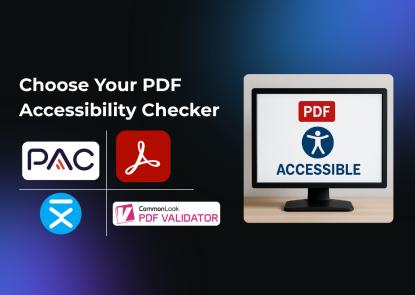EU Accessibility Act in the Netherlands: Systematic and Sector-Integrated
August 28, 2025

In our previous articles, we reviewed how France, Poland, and Germany implemented the EAA, and now we are turning to the EU Accessibility Act in the Netherlands. Dutch law takes a highly structured approach, embedding EAA requirements across existing laws and delegating enforcement to multiple sectoral authorities.
In this article, we break down how the EAA (or Toegankelijkheidsrichtlijn in Dutch) has been transposed in the Netherlands, what it means for businesses, and how companies, whether local or global, must navigate this new legal landscape.
How the European Accessibility Act Affects Business in the Netherlands?
The Netherlands transposed the EAA via the Dutch Implementation Act, passed in April 2024. Instead of creating a single omnibus law, the obligations have been embedded into existing sector-specific legislation.
Examples include:
- Telecommunications Act: For telecoms and digital communication services
- Civil Code: For e-commerce and consumer contracts
- Financial Supervision Act: For banking and financial services
- Equal Treatment of Disabled and Chronically Ill People Act: For transport and audiovisual media
This decentralised transposition means that a business operating across multiple sectors, such as a bank that also sells products via e-commerce, will need to comply with several pieces of legislation at once, each enforced by a different authority. While this allows for more targeted oversight, it also makes compliance more complex, requiring cross-departmental coordination and robust legal oversight.
What the EU Accessibility Act in the Netherlands Requires?
Across all sectors, companies must:
- Ensure products and services are accessible in line with Annex I of the EAA, using EN 301 549 as the functional standard.
- Publish accessibility statements and implement feedback mechanisms for users.
- Maintain documentation and evidence of compliance, and take corrective actions when necessary.
These requirements reflect the EAA’s functional performance principles, which focus on how users experience a product or service rather than prescribing exact technical methods. By centring on perceivability, operability, understandability and robustness, the legislation gives businesses flexibility, but also holds them accountable for delivering genuinely usable services.
Requirements for Banking Services under EU Accessibility Act in the Netherlands
For banking services, the following apply:
- Identification methods, electronic signatures, security, and payment services must be perceivable, operable, understandable, and robust.
- Information must be understandable without exceeding B2 level of the Council of Europe’s Common European Framework of Reference for Languages.
Additional Requirements for (Financial) E-Commerce Services
For (financial) e-commerce services, businesses must:
- Provide information about the accessibility of products and services being sold when such information is provided by the responsible economic operator.
- Ensure accessibility of identification, security, and payment functionalities when these are delivered as part of a service, making them perceivable, operable, understandable, and robust.
- Provide identification methods, electronic signatures, and payment services in line with POUR principles.
What are Exemptions for EAA in the Netherlands?
The EAA in the Netherlands allows exemptions in specific cases:
- Microenterprises: Businesses with fewer than 10 employees and an annual turnover or balance sheet total not exceeding €2 million are exempt. The AFM encourages these businesses to meet EAA standards where possible to improve competitiveness;
- Disproportionate burden: When the costs of compliance outweigh the benefits for persons with disabilities, following the criteria in Annex VI of the EAA. Legitimate reasons must be used; lack of priority, time, or knowledge is not acceptable;
- Fundamental alteration: When compliance would change the essential nature of the service;
- B2B services: The EAA does not apply to business-to-business services.
Even when exemptions apply, Dutch regulators stress that accessibility should be seen as a market opportunity. Complying voluntarily can open access to cross-border customers, increase brand trust, and reduce the risk of future legal changes removing exemptions altogether.
If external funding is provided to improve accessibility, providers cannot claim disproportionate burden or fundamental alteration.
Sectoral Implementation & Enforcement of EAA on Dutch Market
Supervision of the EAA accessibility requirements in the Netherlands is divided among:
- ACM (Authority for Consumers and Markets) – telecom, e-commerce
- RDI (Digital Infrastructure Inspectorate) – infrastructure-related services
- CvdM (Dutch Media Authority) – audiovisual services
- ILT (Human Environment and Transport Inspectorate) – transport
- AFM (Authority for the Financial Markets) – financial services
The Ministry of Health, Welfare and Sport (VWS) maintains an accessibility monitoring website with detailed enforcement guidelines.
Physical Products Used in Service Provision
If physical products are used when providing a service, such as bank cards, random readers, or e-identifiers, they must also meet the EAA’s accessibility requirements.
There is a five-year transition period for products already placed on the market before 28 June 2025. During this time, services can continue using them, but they must be upgraded or replaced to comply with the EAA before the deadline.
For instance, an older random reader device may not support screen reader functionality or tactile feedback, making it difficult for users with visual impairments. During the transition period, such devices can still be used, but they must be upgraded or replaced with fully accessible alternatives before the 2030 deadline.
Timeline and Transition Rules
- 28 June 2025 – EAA obligations apply for all new services and modified contracts.
- Existing service contracts signed before this date can continue without changes for up to five years, until 28 June 2030.
During the transition period, physical products used in providing services must be made accessible before the final deadline.
This dual timeline, services first, products later, means businesses will need to manage two parallel compliance tracks. While the product deadline may seem far away, procuring, testing, and deploying new accessible hardware can take years, making early planning essential.
This applies equally to banking services and financial e-commerce services.
What are Penalties for EAA Non-Compliance in the Netherlands?
Failing to meet the EAA requirements can lead to significant consequences:
| Regulator | Penalty Potential |
| ACM | Fines up to €90,000 or higher based on turnover |
| AFM | Financial penalties and additional sanctions such as market restrictions |
| Other sector regulators | Sanctions relevant to their domain, potentially including suspension of services |
Non-compliance may also lead to service suspensions and reputational damage, as demonstrated in documented cases of enforcement and public backlash.
Summary
The Netherlands embeds EAA obligations into existing sectoral laws, creating a targeted yet comprehensive enforcement model. Businesses, especially in finance and e-commerce, face detailed accessibility requirements for identification, security, and payment functions, as well as clear rules on product accessibility and transition periods. With multiple regulators and penalties of up to €90,000 or more, companies should start preparing now to ensure compliance as soon as possible.
Let’s drive your Digital Transformation Together.
Schedule a free consultation with our team to explore how we can help you achieve your goals.


